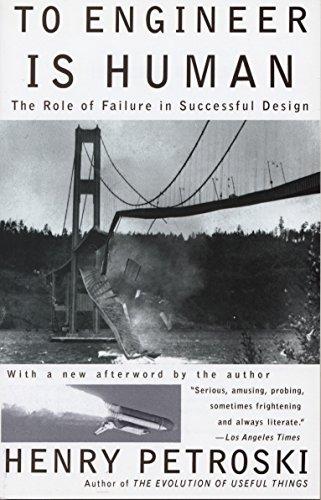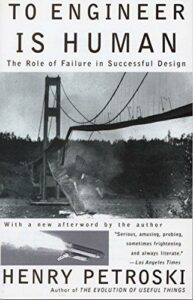In our rapidly paced universe, an invisible thread intertwining us all, is the relentless progression of technology. It’s the beat to which our world dances, shaping our lives with every innovation, every upgrade, every new gadget launched in the market. This blog post is your backstage pass to the concert of tech-gear; where we strip down the flash to reveal the substance, decipher the complex to deliver simplicity. Join us as we embark on an odyssey into the world of technology to uncover products that sync seamlessly with our everyday lives. Welcome to your curated guide through the labyrinth of gadgets and gizmos, where technology is not just simpler, but so much more meaningful. Let’s begin this journey, together.
Table of Contents
To Engineer Is Human: The Role of Failure in Successful Design

If you’re an enthusiast of literature that bridges the gap between science and life, this particular piece would be perfect. Written in English and published by Vintage in March 1992, this paperback edition of 272 interesting pages will certainly keep you intrigued. And the good news is that carrying it will not be a burden – it weighs just 9 ounces and its dimensions are 5.17 x 0.56 x 7.99 inches, it could slide right into your bag with ease.
However, every product has its pros and cons. On the plus side, the book is:
- Lightweight: Thanks to its mere 9-ounce weight, it’s easy to carry around.
- Compact size: Its dimensions of 5.17 x 0.56 x 7.99 inches ensure that it can fit into any bag.
- Informative: With its 272 pages of content, it delivers quality information.
Conversely, potential cons may include:
- May not appeal to non-English readers: The book is written in English which may not attract non-English readers.
- Specific interest required: The book may not please everyone as it requires a specific interest in engineering and design processes.
Q&A
Q1: What’s the overarching principle of “To Engineer is Human: The Role of Failure in Successful Design?”
A1: The book essentially highlights the concept that the process of engineering is fundamentally a trial and error procedure. It underscores the importance of recognizing and learning from our engineering mistakes to drive progress and innovation.
Q2: This blog post talks about tomorrow’s gadgets today. Can you provide examples of such top-tier tech tools?
A2: Absolutely! Some of these gadgets include predictive AI systems, machine learning tools, advanced robotics, bio-inspired designs, virtual and augmented reality systems, and cutting-edge IoT devices. Each of these technologies represents the forefront of human innovation and design.
Q3: How does the concept from the book apply to the tech tools mentioned?
A3: All these cutting-edge tech tools have been through, and continue to undergo, a process of trial and error in design and application. Engineers have had to deal with failures, design flaws, and inefficiencies, tweaking and refining them until they became the revolutionary tools they are today.
Q4: Can you give a specific example of an engineering failure leading to a breakthrough in design?
A4: Sure. For instance, virtual reality (VR) saw many early failures due to issues like frame rate quality, input latency and overall realism. However, these challenges eventually led engineers to design solutions like improved tracking systems, higher display resolutions, and better interactivity, redefining the whole VR experience.
Q5: Does this mean that every failure in tech and gadget design leads to success?
A5: Not necessarily. While failures can provide valuable learning lessons, they don’t guarantee success. Some failures may simply signify limitations. What’s essential is the interpretation of the failure and the application of its lessons to future iterations and innovations.
Q6: What is the future of these cutting-edge tech tools?
A6: The future of these tools largely depends on the continual learning and improvement from engineering and design failures. As we continue to push the boundaries of what is possible, we can expect these tools to become more efficient, versatile, and user-friendly.
Q7: How can readers keep up with all the latest advancements in tech tools?
A7: Staying updated with tech news, following reputable tech blogs and websites, participating in tech forums, and attending tech fairs and expos can help the readers keep their finger on the pulse of the most recent developments in tech tools.
Reveal the Extraordinary
As this cyber journey bids farewell, it is inspiring to glimpse into the sheer brilliance of innovation. The gadgets we detailed today, alchemized at the intersection of tech and ingenuity, are no less than moonshots, redefining our reality even as we speak. From the intersection of human engineering and technological probabilities, the “To Engineer Is Human: The Role of Failure in Successful Design” offers fascinating insights into the see-saws of design iterations. It urges us all to celebrate the role of failure, an unsung hero in the journey to cutting-edge solutions. As we morph into a digital society, may we adapt, evolve, and indeed, embrace these new tech tools that play a part in constructing tomorrow’s world. A world that is a marvel of our collective imagination and resilience. Until the next roundup, remember every gadget in your hand today was once the impossible dream of an audacious dreamer.

